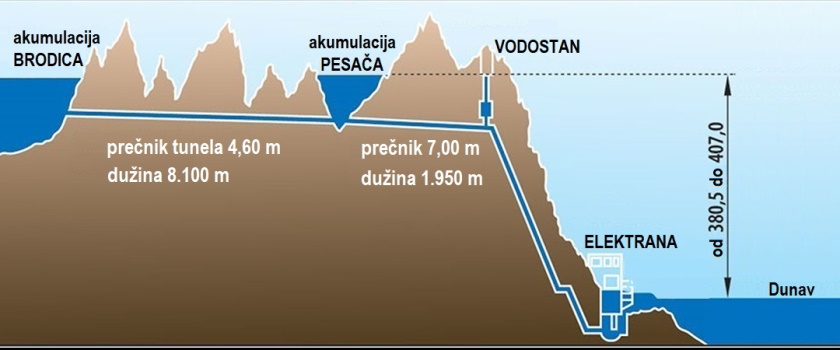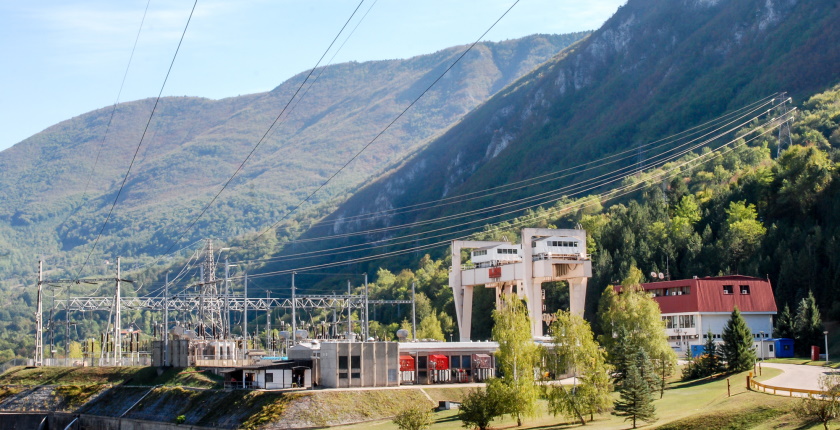
Photo: Stevan Aksentijevic from Pixabay
The Ministry of Mining and Energy will present a EUR 17 billion investment plan in September. Investments in new large-scale hydropower plants include the construction of pumped storage hydropower plants Đerdap 3 and Bistrica. According to Professor Nikola Rajaković, the two systems could play a major role in Serbia’s energy transition by facilitating the integration of solar power plants and wind farms.
Deputy Prime Minister and Minister of Mining and Energy Zorana Mihajlović said the investment plan would be presented in September and that the projects are worth EUR 17 billion.
The ministry anticipates the implementation of the first large investments would begin in 2022. The plan includes the construction of large hydropower plants, such as Đerdap 3 and Bistrica, as well as solar, gas and wind power plants which will secure the stability of the energy system, Mihajlović said.
Mihajlović: If Serbia doesn’t shift to green energy, it will have to pay big taxes
The goal is to arrange the construction of renewable energy power plants over the next 20, 30 years. It is important to secure the competitiveness of the economy, she said.
“If we do not turn to green energy, we will have to pay big taxes, making the economy and citizens suffer,” Mihajlović said.
Rajaković: The construction of Bistrica is more feasible than Đerdap 3

Plans to build pumped storage hydropower plants Đerdap 3, with a capacity of 2,400 MW, and Bistrica, with a capacity of 680 MW, are several decades old. The investment in Đerdap 3 is estimated at several billion euros, and in Bistrica at about EUR 600 million.
Pumped storage hydropower plants are solving the problem of the variability of production from wind farms and solar power plants
Pumped storage hydropower plants produce peak energy to cover maximum consumption during the day. They are also a solution for the variability of green power plants as they provide energy storage.
The Bistrica project is already partly prepared
Nikola Rajaković, a professor at the Belgrade School of Electrical Engineering and president of the Association of Energy Sector Specialists and Power Engineers of Serbia, told Balkan Green Energy News that the fact the ministry’s investment plan envisages the construction of renewable power plants is great news, particularly in the case of Đerdap 3 and Bistrica. The two power plants, especially Bistrica, would enable easier integration of wind farms and solar power plants.
Bistrica is excellent because a lot of things have already been set up and it can be said that it is a partly prepared project, he said.
Đerdap 3 exceeds the needs of Serbia, and makes sense as a regional or European project
“A natural lake is already there, to get the role of the upper reservoir, and the construction works are not expensive. However, there was always a lack of money for that project. The purpose of Bistrica is to help integrate a larger amount of renewable electricity as easier as possible into the electricity system,” Rajaković added.
State-owned power utility Elektroprivreda Srbije (EPS) currently operates one pumped storage hydropower plant: RHE Bajina Bašta.
Regarding Đerdap 3, Rajaković says that it is a big project and that the upper lakes would be built. Construction is very expensive and exceeds the needs of Serbia, in his words
“But it would be good for the needs of the region and Europe. It would be great for balancing variable production from wind and solar power plants. This means funding could also come from that side,” he said.

EPS: Đerdap would be built in three phases
The Đerdap 3 project is planned on the Danube’s 1,007th kilometer. The concept is to pump water from the artificial Đerdap lake on the Danube to reservoirs Pesača and Brodica when the electric power system of Serbia has a surplus of electricity, according to EPS.
Đerdap 3 is envisaged to be built in three stages. Total annual production after the completion of phase 3 is estimated at 484 GWh.


















Be the first one to comment on this article.